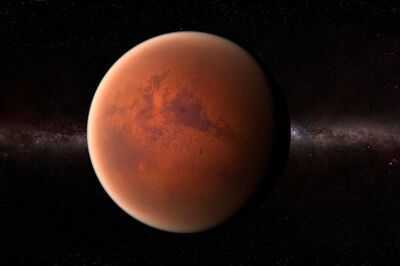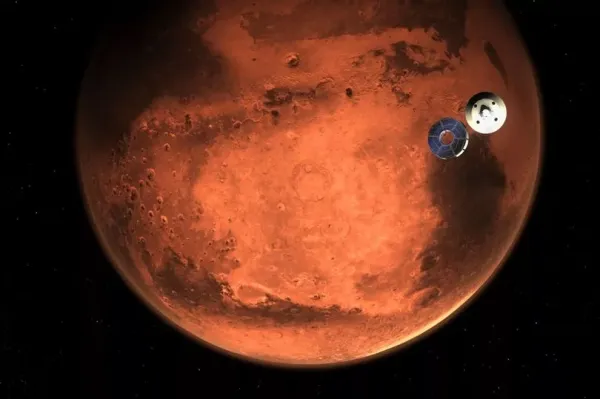
NASA's space rover has found fresh evidence of life on Mars, including free flowing water and conditions that point to a history ofliving organisms.
Scientists identified 24 minerals that point to previous volcanic rocks altered by interactions with water in the Jezero Crater. They said this indicated that Jezero hosted habitable environments on more than one occasion, as per Rice University, who led the study. They know this because the water changed the rocks into salts and clay meaning they came into contact with liquids. The latest research suggests that conditions suitable for life may have occurred multiple times throughout Mars' lifespan.
The first would have been a high-temperature acidic water, and the second episode would have seen more neutral conditions over a larger area. The third episode low-temperature alkaline conditions, considered highly suitable for life. Rice University graduate student Eleanor Moreland, who led the study, said: “The minerals we find in Jezero support multiple, temporally distinct episodes of fluid alteration.
READ MORE: 'My legs stopped working a week after going numb on a flight'
READ MORE: All Creatures Great and Small star confirms character's exit in series 6 update

['This] indicates there were several times in Mars' history when these particular volcanic rocks interacted with liquid water and therefore more than one time when this location hosted environments potentially suitable for life.”
The Jezero Crater is a 28-mile-wide region on Mars which is the current locale of NASA’s Perseverance rover since February 2021.
Evidence from the rover points to the crater previously being an ancient lake and river delta.
To interpret the rover's data, the team used the Mineral Identification by Stoichiometry (MIST) algorithm alongside the Planetary Instrument for X-ray Lithochemistry (PIXL).

This tool identifies minerals in chemical data through comparison to an existing database of known minerals.
The first group of minerals, greenalite, hisingerite, and ferroaluminoceladonite, formed in hot, acidic water confined to the crater floor.
Greenalite is an iron-rich mineral that forms in high-temperature, low-pH environments. Hisingerite is a clay-like mineral created when volcanic rocks react with acidic water.
Ferroaluminoceladonite is a mineral that is borne in volcanic rocks exposed to hot, acidic liquids.
These rocks which would have formed in extreme conditions would have made them least favorable for life.
Co-author Kirsten Siebach, assistant professor of Earth sciences, said: “These hot, acidic conditions would be the most challenging for life. But on Earth, life can persist even in extreme environments like the acidic pools of Yellowstone, so it doesn't rule out habitability.”
The second group of minerals formed in the more neutral water would have covered more of the crater.
A clay-like mineral called Minnesotaite was found on both the crater floor and the upper fan region. Clinoptilolite, a zeolite mineral, appeared only on the crater floor.
The third group formed in cooler, base conditions, are considered optimal for life.
Sepiolite, a common alteration mineral on Earth, formed under moderate temperatures and alkaline conditions and was rife in the crater.
“These minerals tell us that Jezero experienced a shift from harsher, hot, acidic fluids to more neutral and alkaline ones over time, conditions we think of as increasingly supportive of life.
“Our error analysis lets us assign confidence levels to every mineral match. MIST not only informs Mars 2020 science and decision-making, but it is also creating a mineralogical archive of Jezero Crater that will be invaluable if samples are returned to Earth.”
-
Devdutt Padikkal’s 150, Dhruv Jurel’s 140 shine as India A vs Australia A end in draw at Lucknow

-
8th Pay Commission UPDATE: Will this facility be abolished? Important information for central government employees is…

-
IIFCL working on green, climate risk assessment & cost-cutting initiatives

-
More efforts needed to drive 5G uptake across sectors: DoT secretary

-
CAG pushes AI, digital tools to detect frauds in audits
